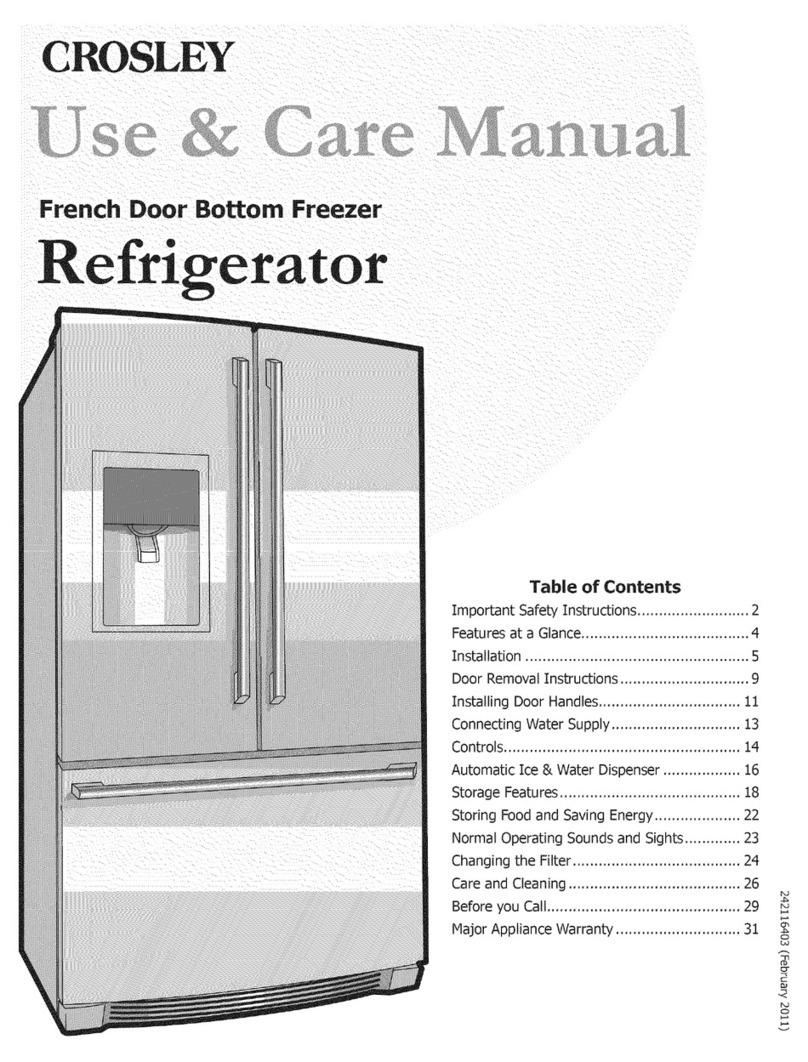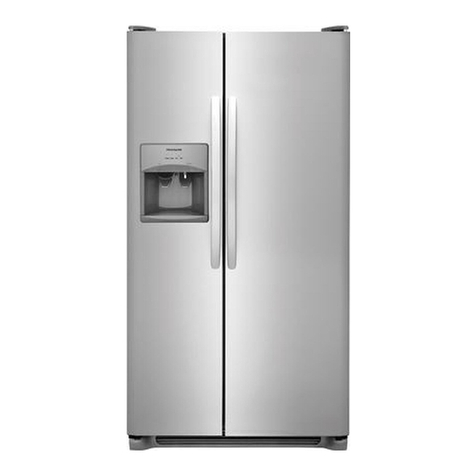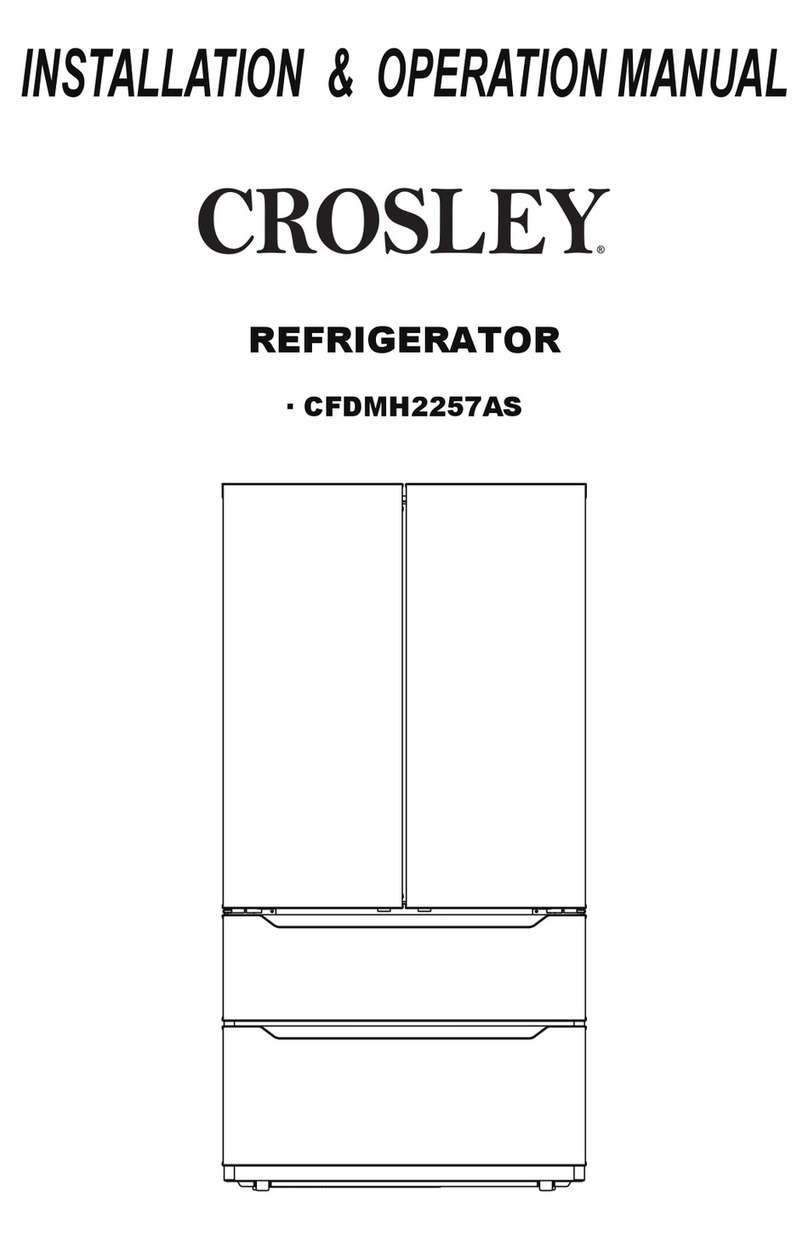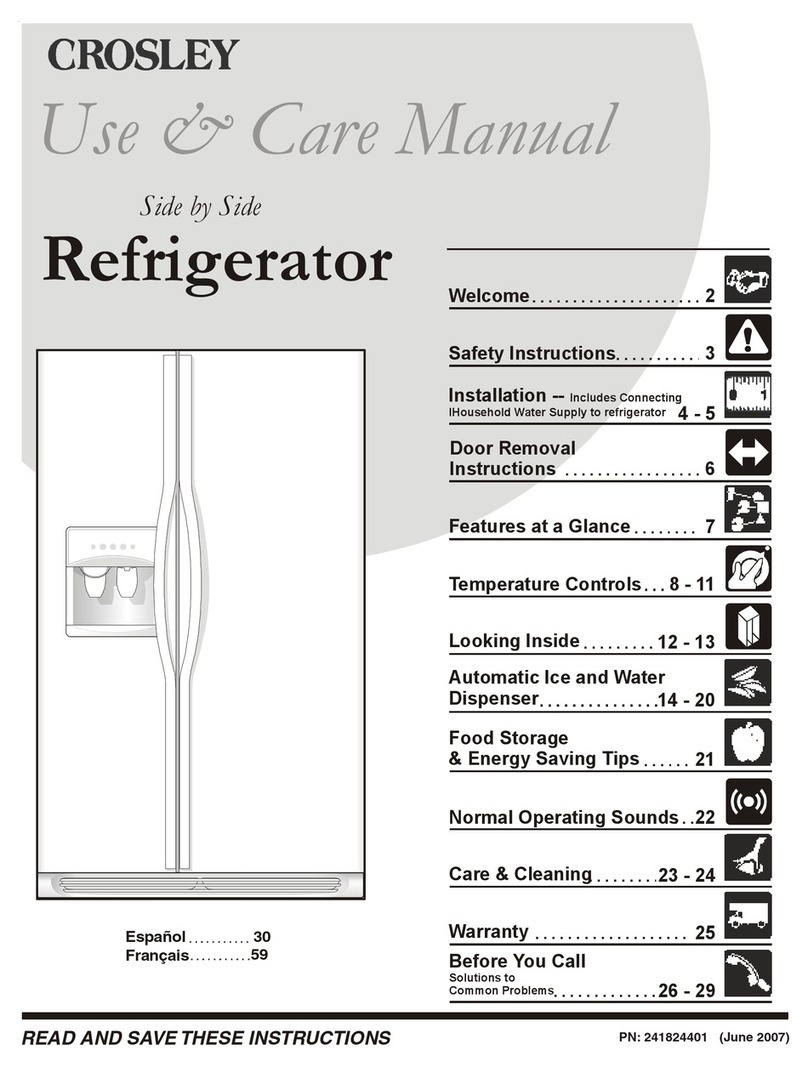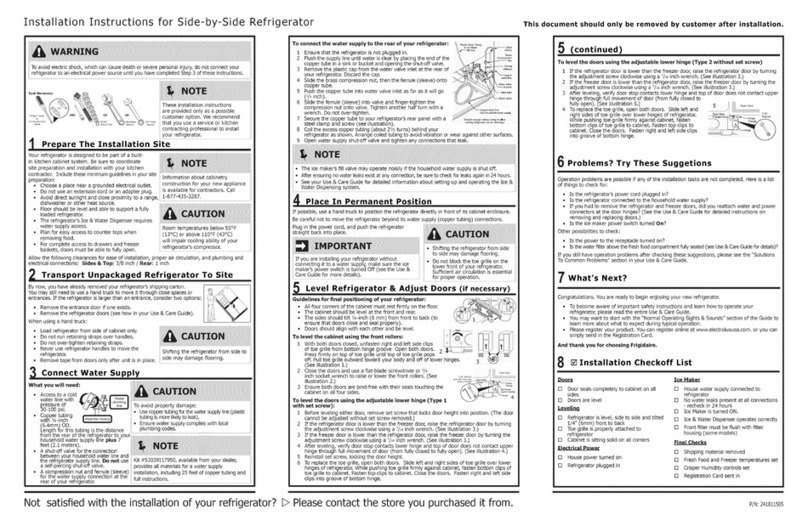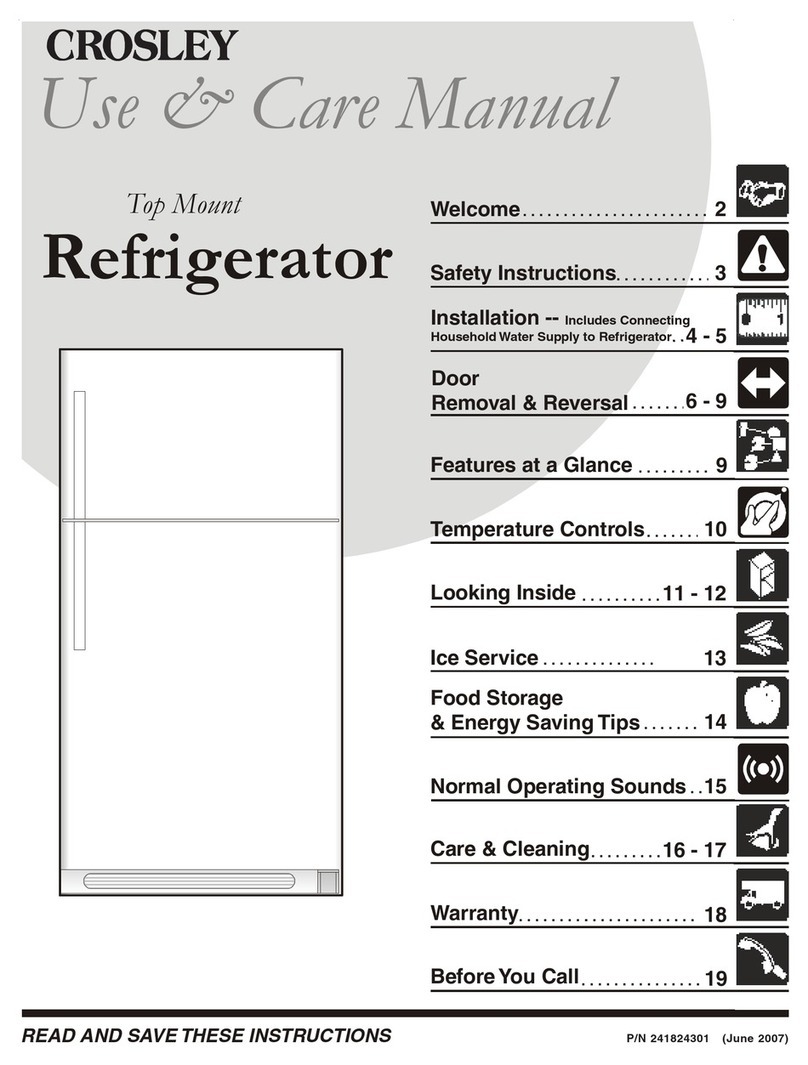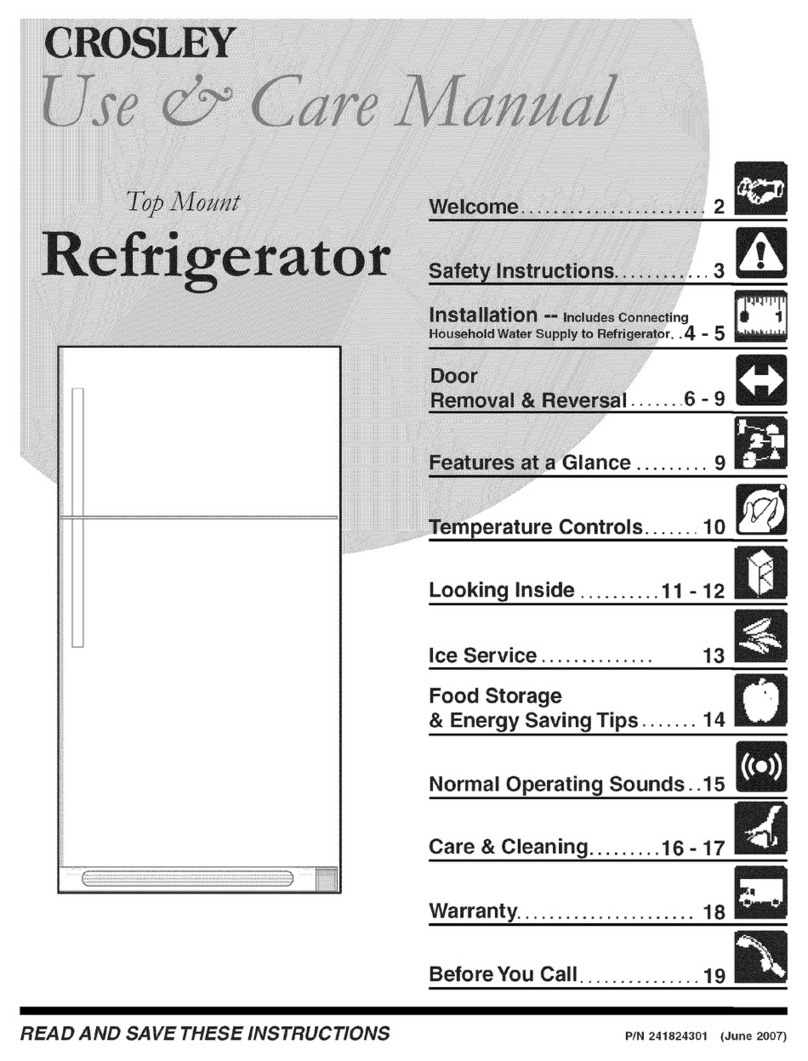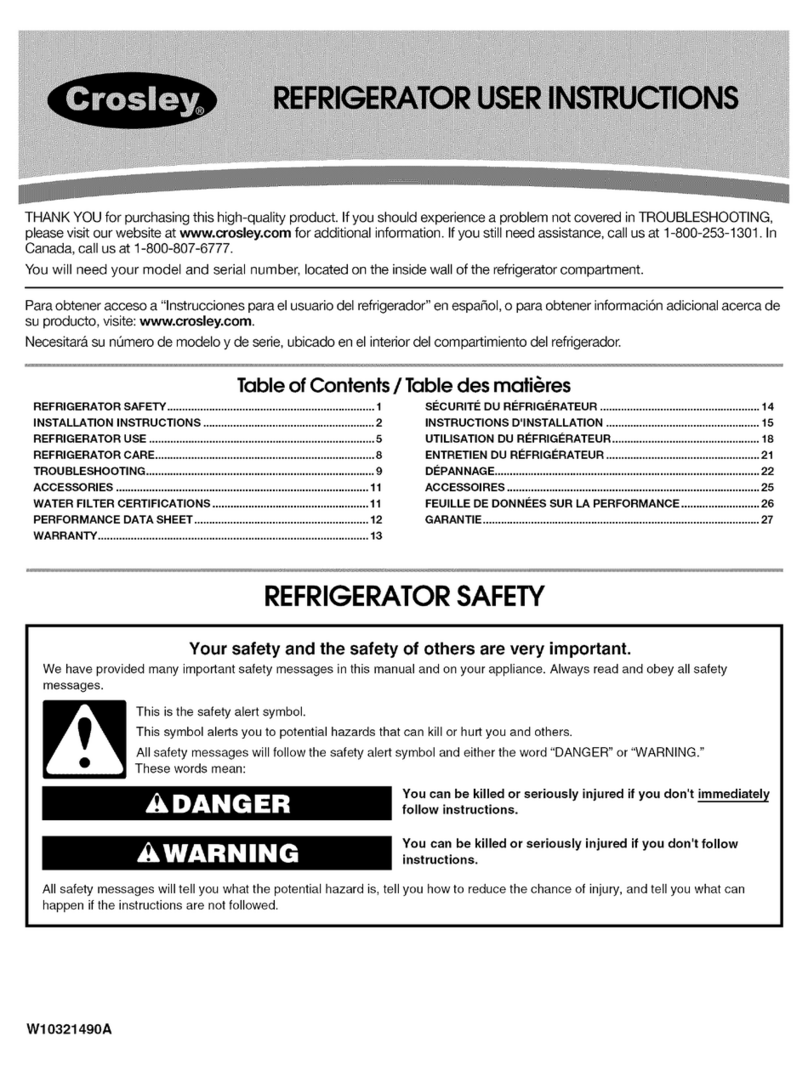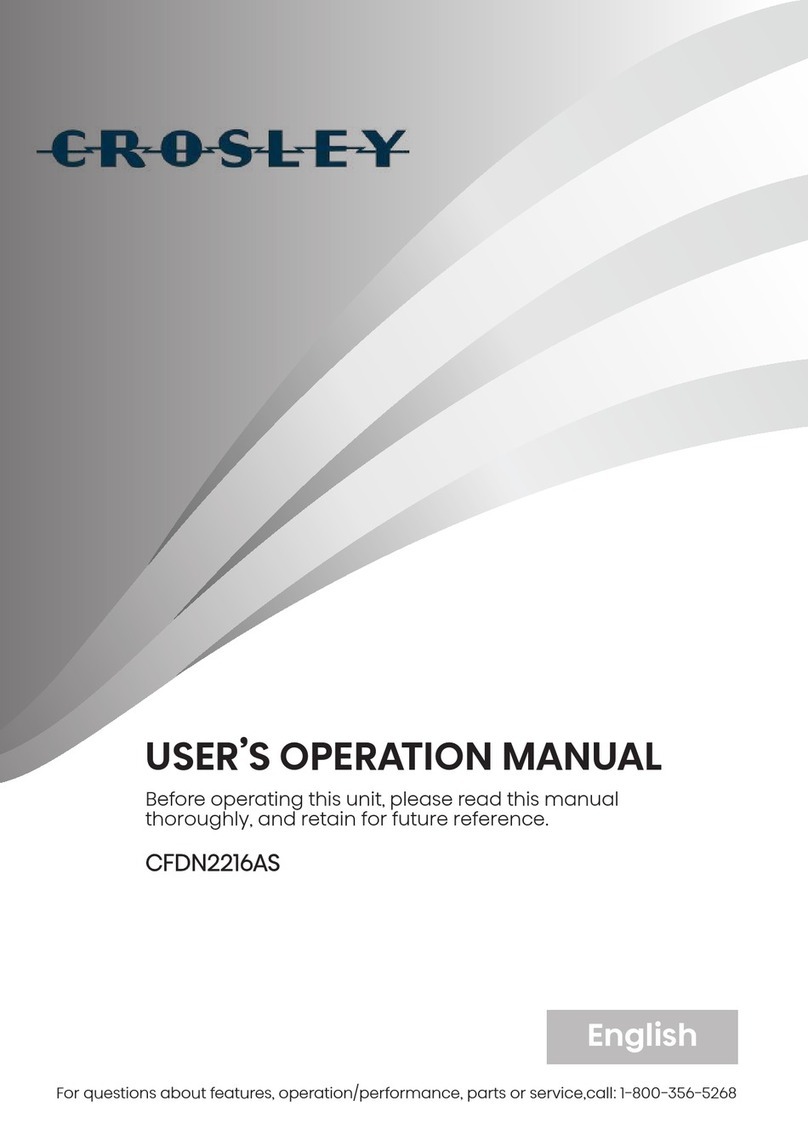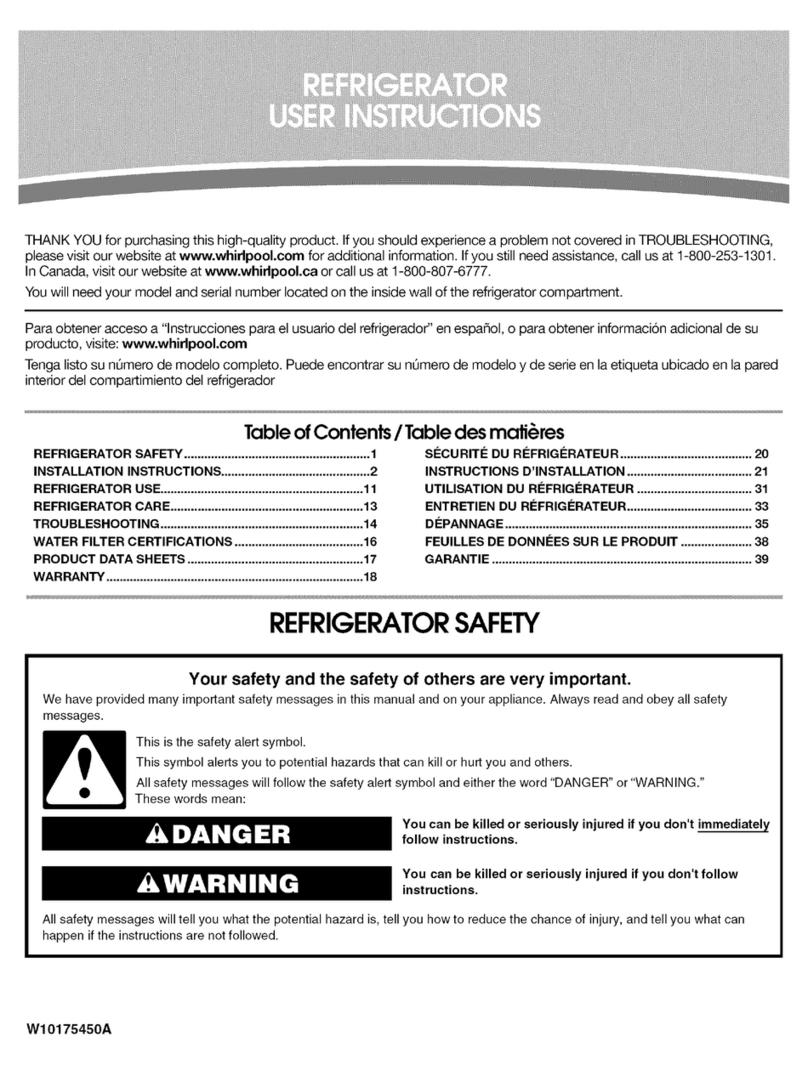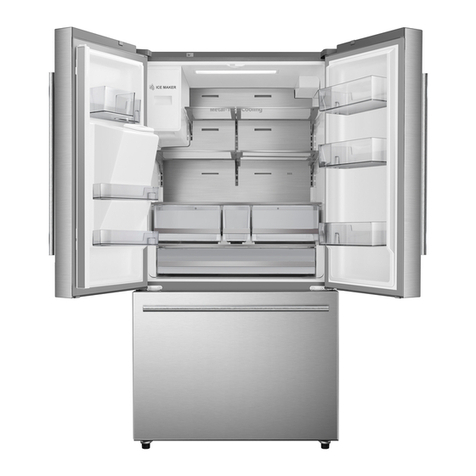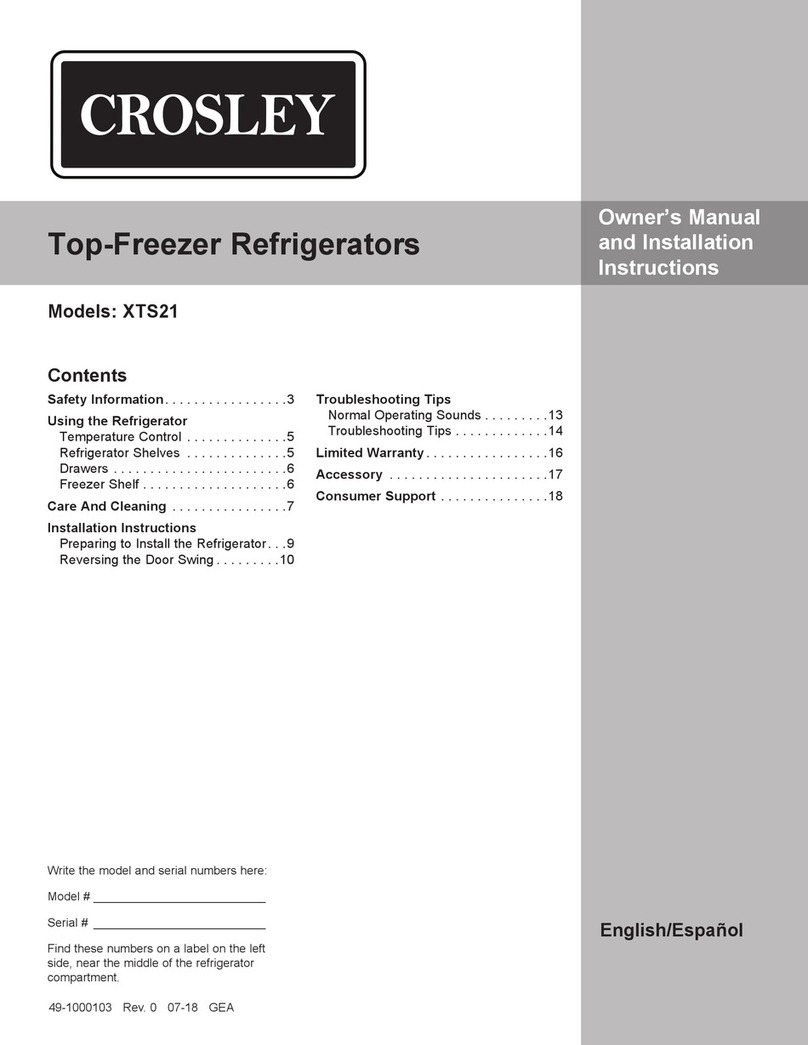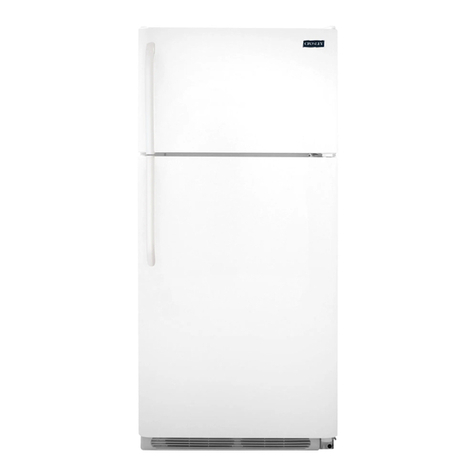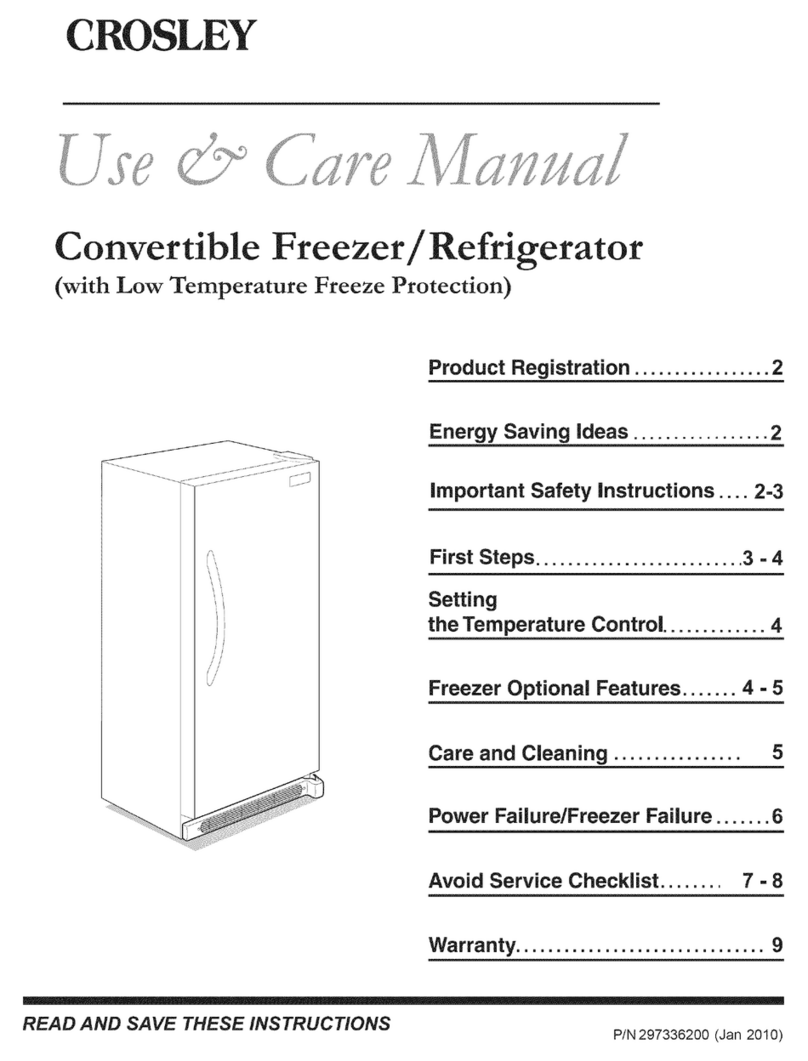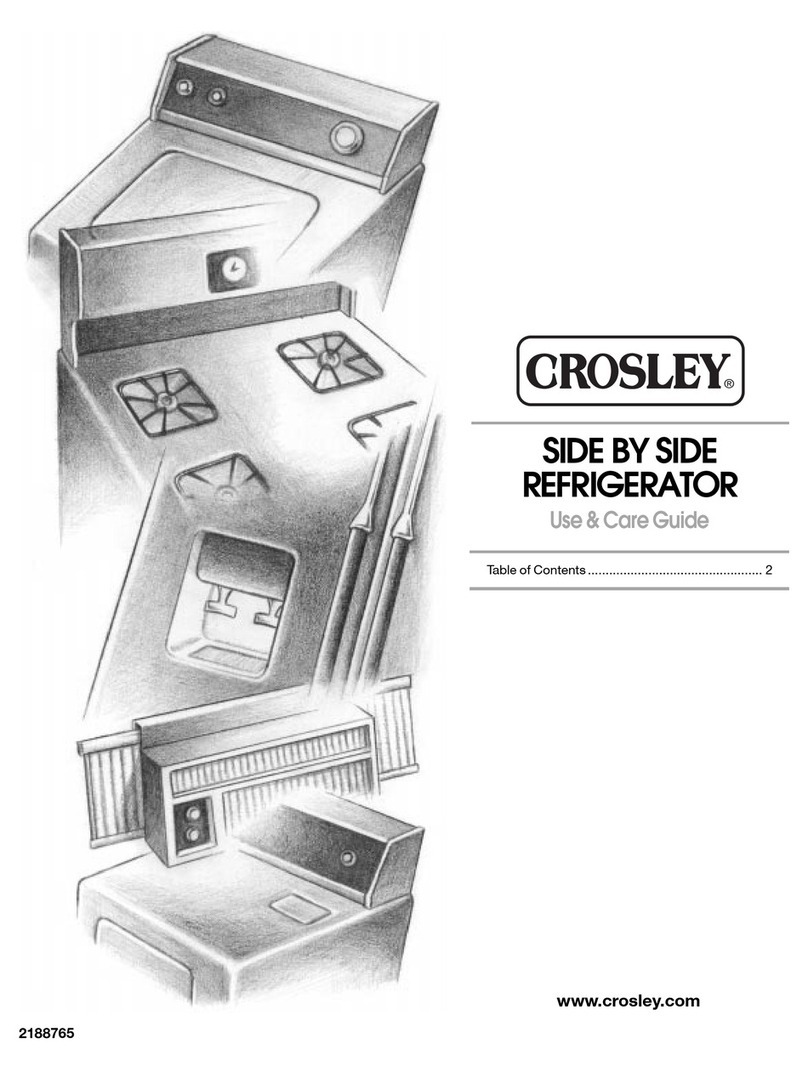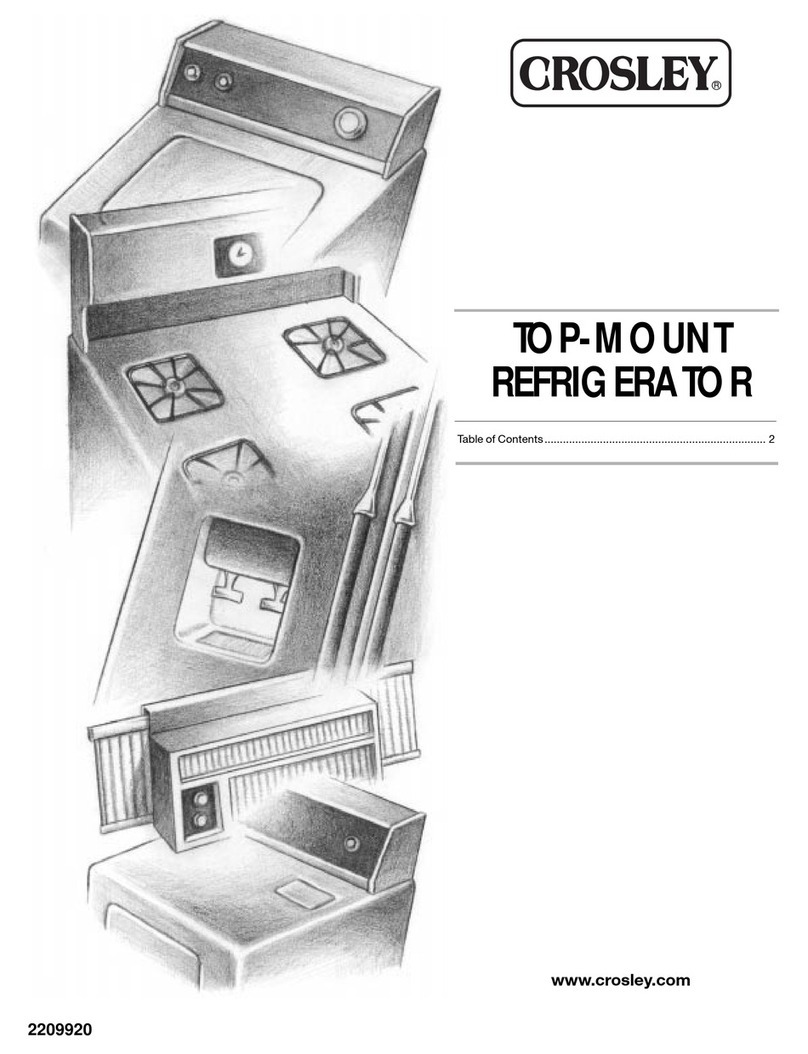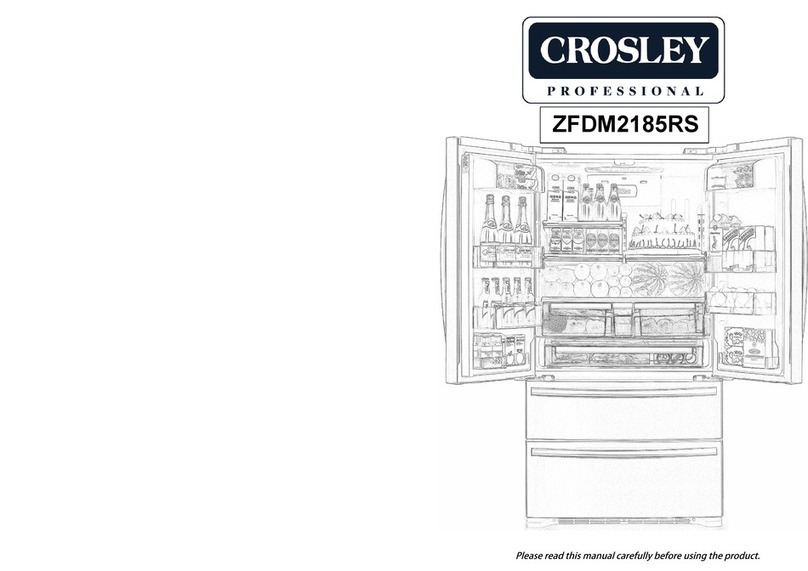
REFRIGERANT and cyclopentane foaming material used for the appliance are flammable.
Therefore, when the appliance is scrapped, it shall be kept away from any fire source and be recovered by
a special recovering company with corresponding qualification other than be disposed by combustion,
so as to prevent damage to the environment or any other harm.
THE necessity that, for doors or lids fitted with locks and keys, the keys be kept out of the reach
of children and not in the vicinity of the refrigerating appliance, in order to prevent children from being
locked inside .
WARNING: To avoid a hazard due to instability of the appliance, it must be fixed in accordance
with the instructions.
WARNING: Connect to potable water supply only. (Suitable for ice making machine)
TO Prevent A Child From Being Entrapped, Keep Out Of Reach Of Children And Not In The Vicinity
Of Freezer (Or Refrigerator). (Suitable for products with locks)
TO avoid contamination of food, please respect the fo owing instructions:
– Opening the door for long periods can cause a significant increase of the temperature in the
compartments of the appliance.
– Clean regularly surfaces that can come in contact with food and accessible drainage systems.
– Clean water tanks if they have not been used for 48 h; flush the water system connected to a water
supply if water has not been drawn for 5 days. (note 1)
– Store raw meat and fish in suitable containers in the refrigerator, so that it is not in contact with or
drip onto other food.
– Two-star frozen-food compartments are suitable for storing pre-frozen food, storing or making
ice-cream and making ice cubes. (note 2)
– One-, two- and three-sta compa tments are not suitable for the freezing of fresh food. (note 3)
– For appliances without a 4 star c artment: this refrigerating appliance is not suitable for freezing
foodstuffs.(note 4)
– If the refrigerating applianc is le t empty for long periods, switch off, defrost, clean, dry, and leave
the door open to prevent mould developing within the appliance.
Note 1,2,3,4:Please confirm whether it is applicable according to your product compartment type.
FOR a freestanding appliance: this refrigerating appliance is not intended to be used as a built-in
appliance.
ANY replacement or maintenance of the LED lamp is intended to be made by the manufacturer,
its service agent or similar qualified person.
2

